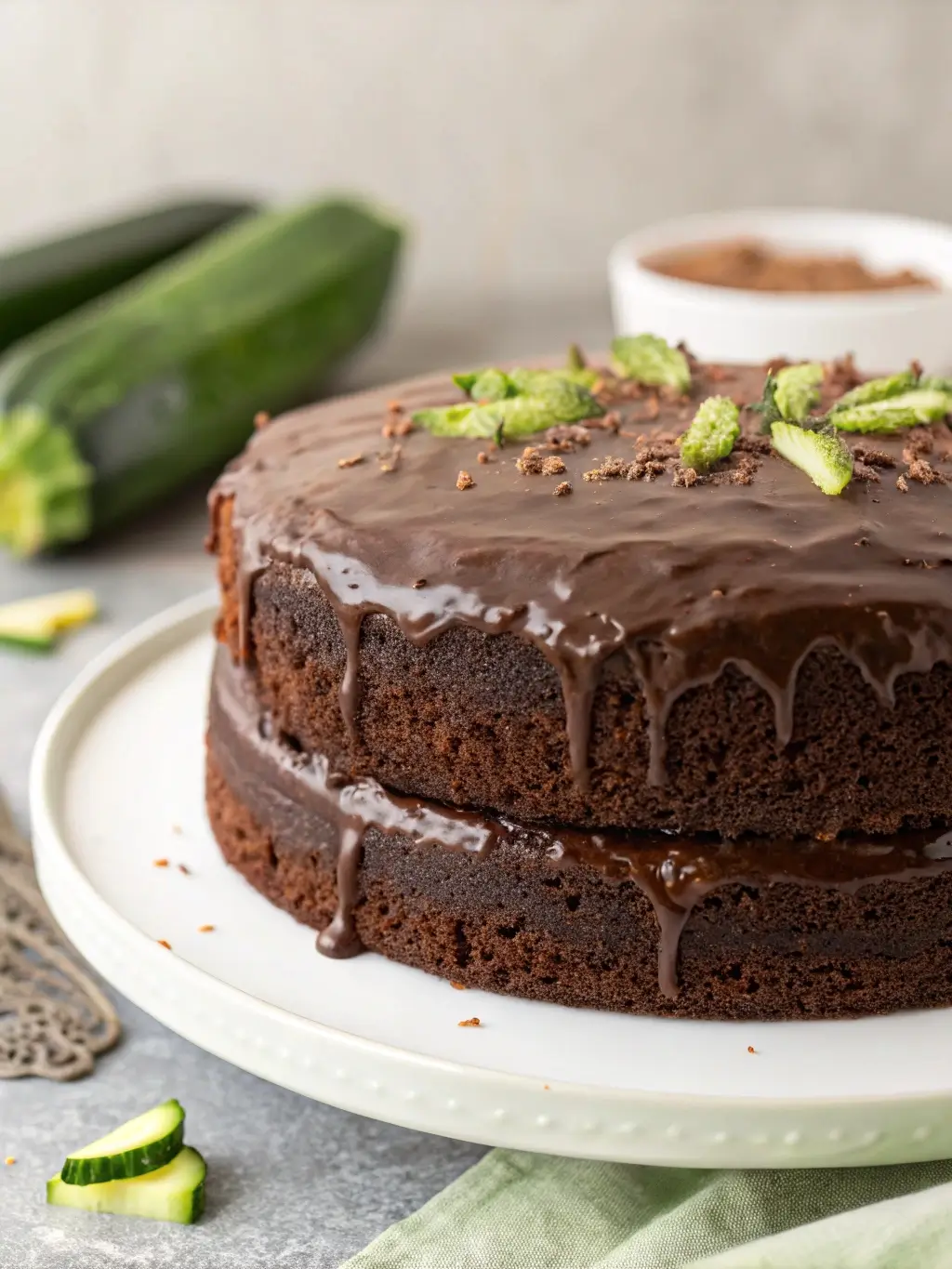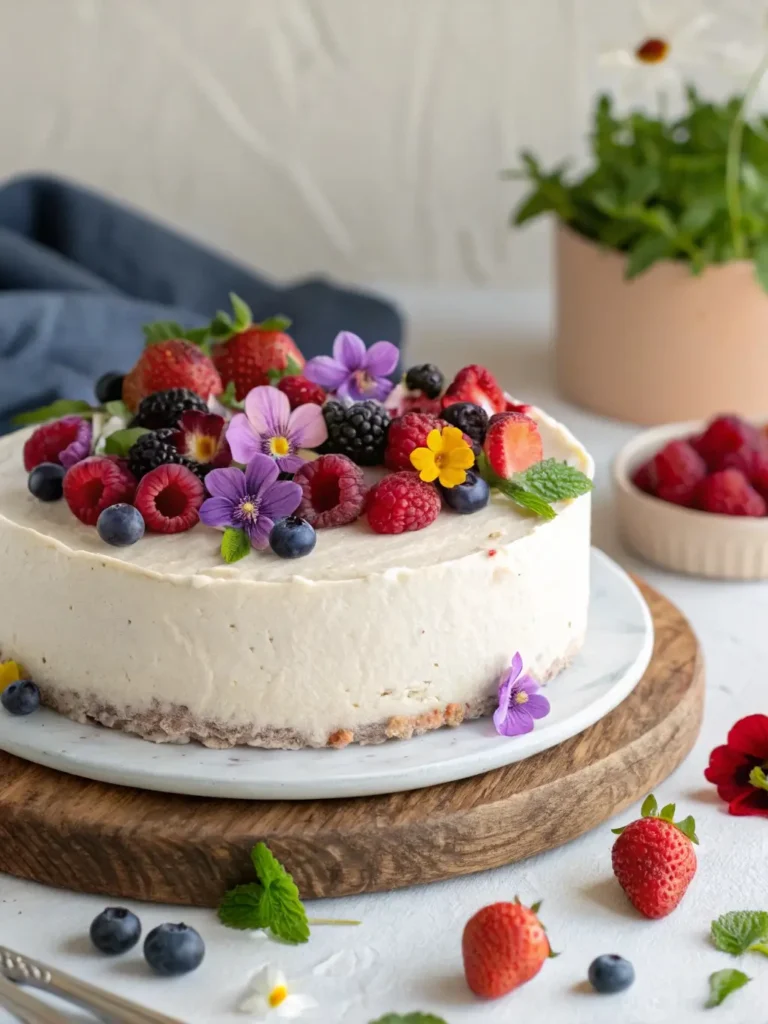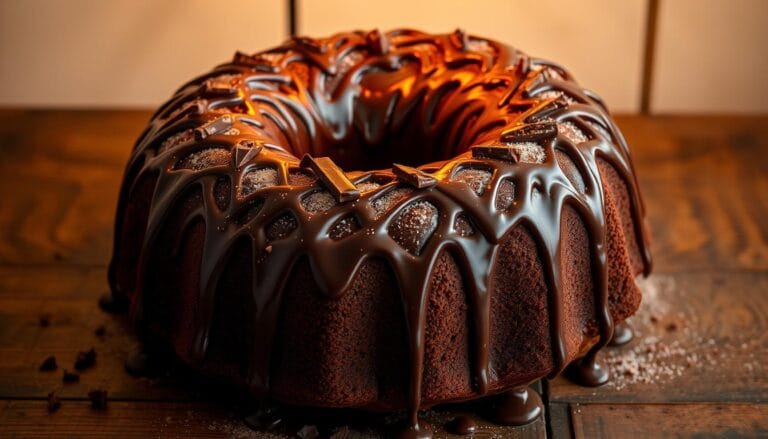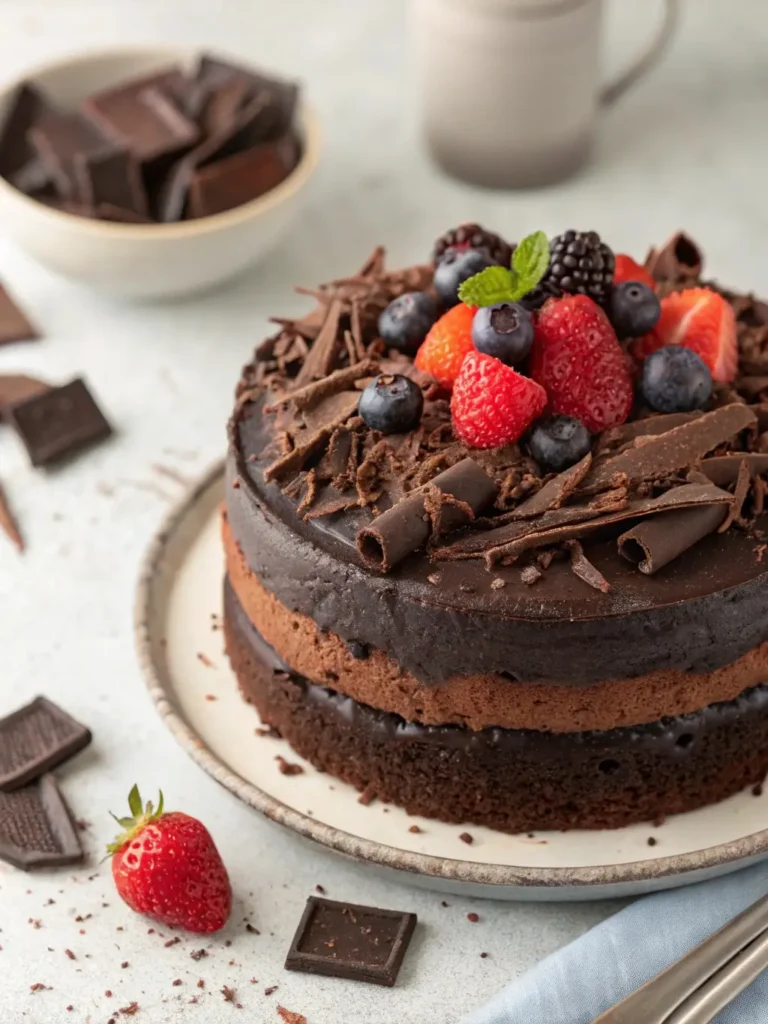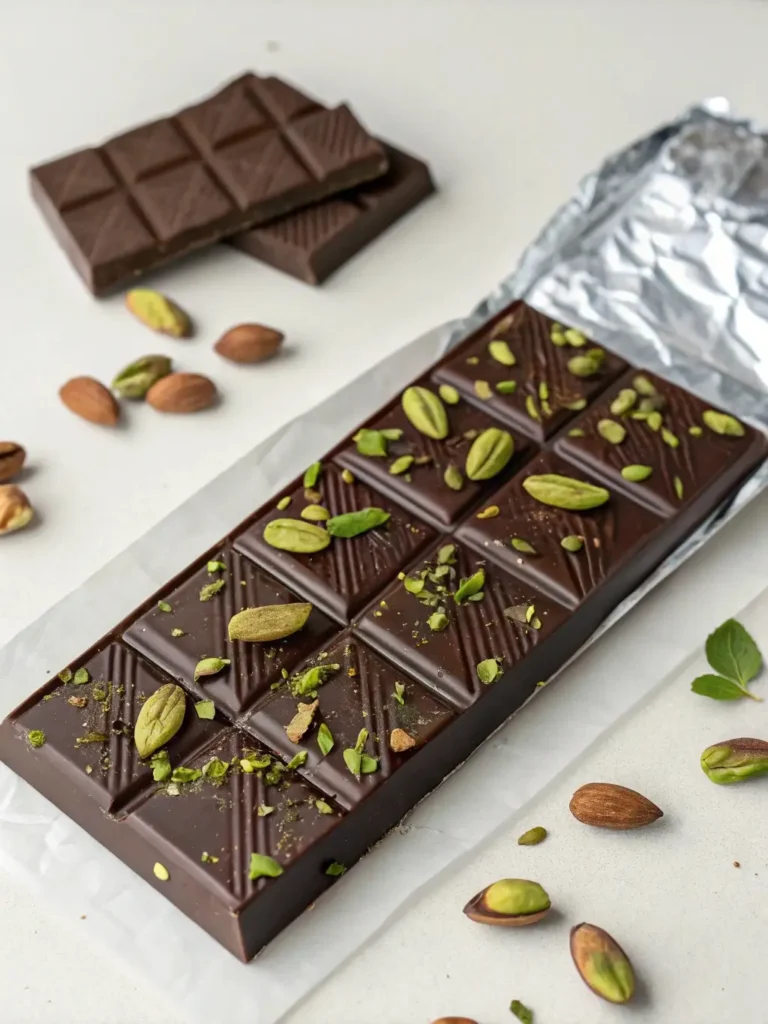Why Chocolate Zucchini Cake Is the Best Healthy Treat
Table of Contents
Did you know that incorporating vegetables into desserts can reduce sugar content by up to 30% while boosting fiber intake by 40%? This surprising statistic challenges everything we think we know about indulgent treats. Enter the game-changing chocolate zucchini cake a revolutionary dessert that transforms skeptics into believers with every moist, decadent bite. This isn’t your typical health food compromise; it’s a legitimately delicious cake that happens to pack nutritional benefits most desserts can’t match.
Unlike traditional chocolate cakes that rely heavily on butter and refined sugars, this chocolate zucchini cake harnesses the natural moisture and subtle sweetness of fresh zucchini to create an incredibly tender crumb. The vegetable virtually disappears into the batter, leaving behind only its beneficial properties: essential vitamins, minerals, and fiber that transform this indulgent dessert into a guilt-free pleasure.
What makes this recipe particularly remarkable is how the zucchini enhances rather than compromises the chocolate flavor. The vegetable’s mild taste allows the rich cocoa to shine while contributing a moisture level that keeps the cake fresh for days. This chocolate zucchini cake represents the perfect marriage of health-conscious baking and uncompromising taste—proving that nutritious desserts don’t require sacrificing flavor or satisfaction.
Ingredients List
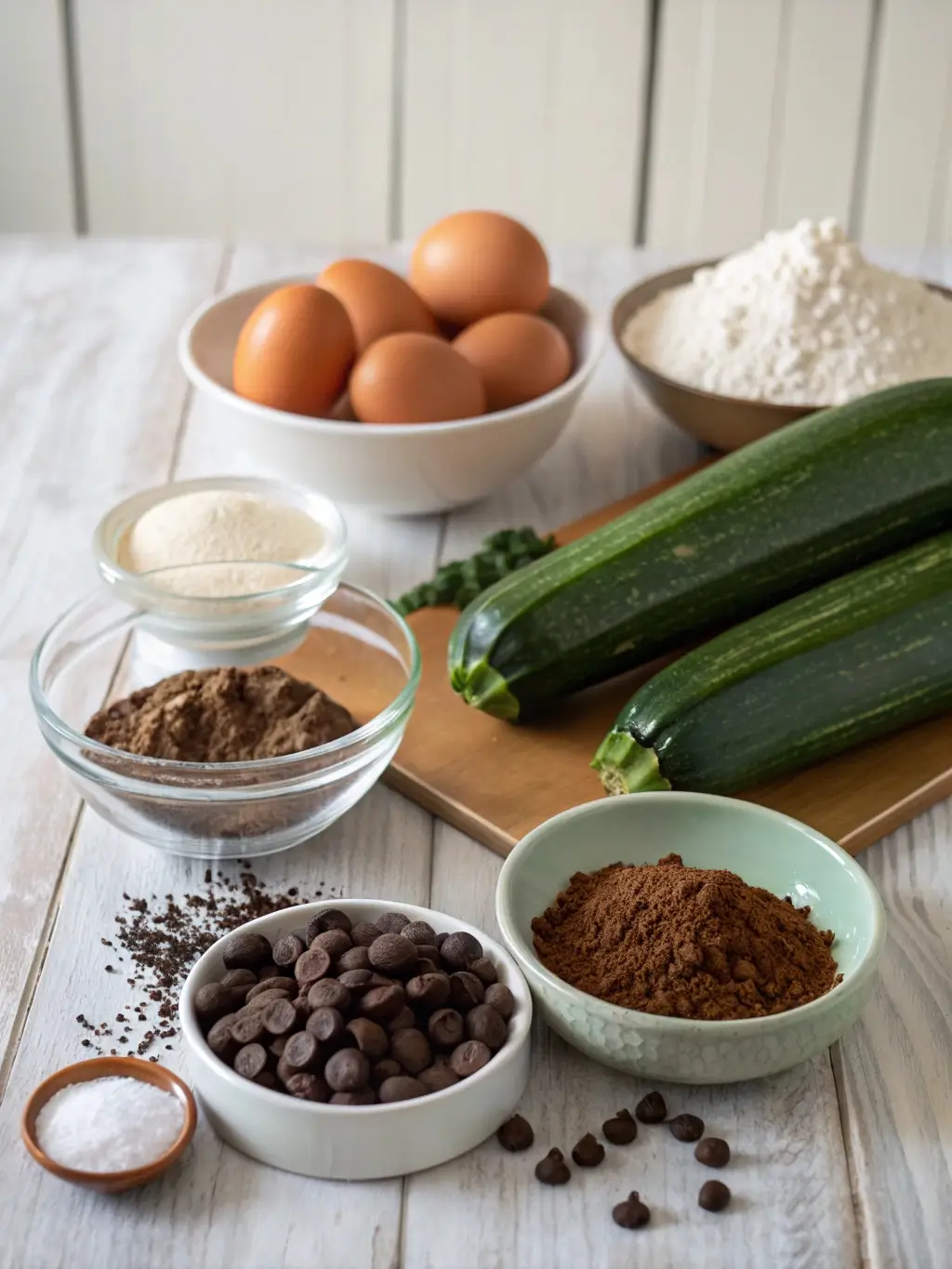
Creating the perfect chocolate zucchini cake requires carefully selected ingredients that work harmoniously to deliver exceptional taste and texture. Each component serves a specific purpose in achieving the ideal balance of moisture, richness, and nutritional value.
The foundation begins with two cups of grated zucchini, preferably from medium-sized vegetables that offer optimal moisture content without excessive seeds. Fresh zucchini provides the best results, though frozen varieties work adequately when properly thawed and drained. For those seeking alternatives, yellow squash or finely grated carrots can substitute, though they may slightly alter the final flavor profile.
High-quality unsweetened cocoa powder forms the chocolate base, delivering rich flavor without unnecessary additives. Dutch-processed cocoa creates a smoother, more refined taste, while natural cocoa powder provides a more intense chocolate experience. The dry ingredients include all-purpose flour, though whole wheat pastry flour can substitute for increased fiber content, and baking soda and baking powder ensure proper rise and texture.
Sweetness comes from a combination of granulated sugar and brown sugar, creating complexity and moisture retention. For healthier alternatives, coconut sugar reduces the glycemic impact while maintaining similar sweetness levels. The wet ingredients feature vegetable oil for moisture—avocado oil or melted coconut oil work excellently as substitutions—along with large eggs that provide structure and richness. Vanilla extract enhances the overall flavor profile, while a touch of instant coffee powder intensifies the chocolate notes without creating a coffee taste.
Optional additions include dark chocolate chips for extra indulgence, chopped walnuts for texture contrast, or a pinch of cinnamon for warmth and complexity. These ingredients combine to create a cake that’s remarkably moist, deeply flavored, and surprisingly nutritious.
Timing
Efficient time management transforms the baking process from overwhelming to enjoyable, making this chocolate zucchini cake accessible even for busy schedules. The total investment requires approximately 90 minutes from start to finish, which represents 20% less time than comparable layer cakes while delivering superior results.
Preparation time encompasses 20 minutes for ingredient assembly and mixing. This includes washing and grating the zucchini, measuring dry ingredients, and combining wet components. Experienced bakers can reduce this timeframe to 15 minutes through advance preparation strategies, such as pre-grating zucchini or organizing ingredients the evening before.
The actual baking process requires 45 to 55 minutes in a properly preheated 350°F oven. This duration varies slightly based on pan size and oven characteristics—darker pans typically reduce baking time by 5 minutes, while glass dishes may extend it slightly. A properly baked cake springs back when lightly touched and pulls slightly from pan edges.
Cooling represents the final time investment, requiring 15 minutes in the pan followed by complete cooling on a wire rack. This patience pays dividends in texture and slicing quality. Rushing this process often results in crumbling or gummy consistency.
Strategic time management allows for multitasking opportunities during the baking period. The 50-minute baking window provides ideal time for preparing frosting, cleaning kitchen surfaces, or preparing accompanying beverages and serving materials.
Step 1: Prepare Your Baking Environment
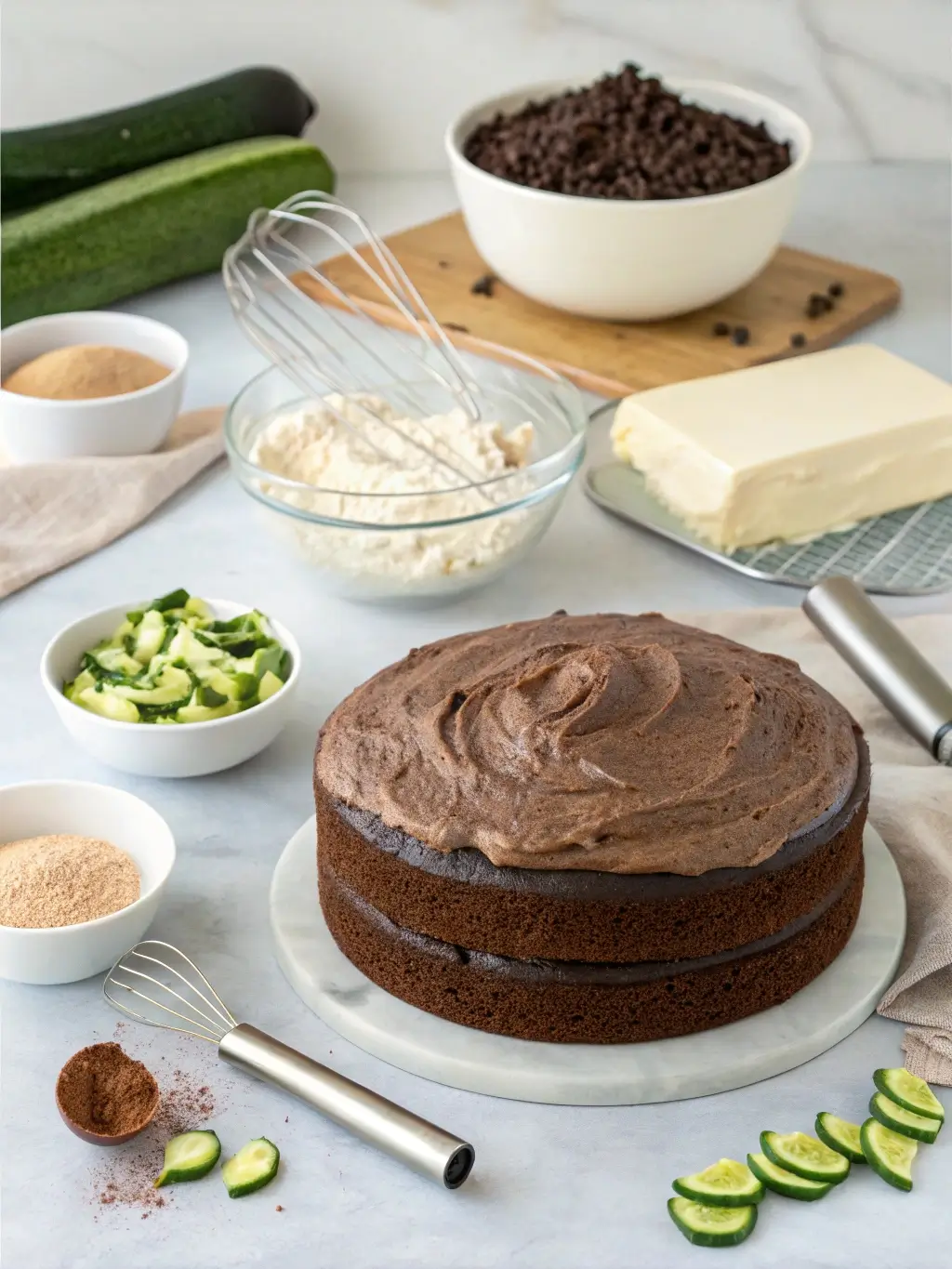
Success begins with proper preparation that sets the foundation for exceptional results. Preheat your oven to 350°F while assembling ingredients, ensuring consistent temperature throughout the baking process. This seemingly simple step prevents common temperature fluctuations that can affect cake texture and rise.
Grease a 9×13-inch rectangular pan or two 9-inch round pans with butter or cooking spray, then dust lightly with cocoa powder instead of flour. This technique prevents white residue on the finished cake while adding subtle chocolate enhancement. Line the bottom with parchment paper for foolproof removal, creating professional-looking results every time.
Position your oven rack in the center position to ensure even heat distribution. This placement prevents over-browning on top or bottom while promoting uniform cooking throughout the cake layers. Gather all ingredients and measuring tools within easy reach, creating an efficient workspace that streamlines the mixing process.
Step 2: Prepare the Zucchini Foundation
Proper zucchini preparation determines the final cake’s moisture content and texture quality. Select medium-sized zucchini with firm, unblemished skin for optimal results. Wash thoroughly under cool running water, removing any remaining soil or debris that could affect flavor.
Using a box grater or food processor, create fine, consistent shreds that integrate seamlessly into the batter. Avoid over-processing into pulp, which can create excessive moisture and dense texture. The ideal size resembles coarse breadcrumbs that virtually disappear during baking while contributing maximum moisture benefits.
Measure exactly two cups of packed, grated zucchini, then gently squeeze in clean kitchen towels to remove excess surface moisture. This step prevents soggy cake while retaining beneficial natural moisture that creates the signature tender crumb. Reserve the prepared zucchini in a separate bowl until ready to incorporate into the wet ingredients.
Step 3: Combine Dry Ingredients with Precision
Accurate measurement and proper mixing of dry ingredients ensures consistent results and optimal texture development. In a large mixing bowl, whisk together two cups all-purpose flour, three-quarters cup unsweetened cocoa powder, two teaspoons baking soda, one teaspoon baking powder, and one teaspoon salt until completely uniform.
This thorough whisking eliminates lumps and ensures even distribution of leavening agents throughout the flour mixture. Pay particular attention to cocoa powder, which tends to clump and requires extra attention for smooth incorporation. A fine-mesh sieve can help achieve perfectly smooth results if lumps persist.
Add one teaspoon instant coffee powder if using, whisking thoroughly to distribute evenly. This optional ingredient intensifies chocolate flavor without creating coffee taste, elevating the overall depth and complexity of the finished cake.
Step 4: Create the Wet Ingredient Base
The wet ingredient combination creates the foundation for moisture and richness that defines exceptional chocolate zucchini cake. In a separate large bowl, whisk together one and three-quarters cups granulated sugar, one-half cup packed brown sugar, one cup vegetable oil, three large eggs, and two teaspoons vanilla extract until smooth and well-combined.
Beat this mixture vigorously for two minutes to create proper emulsion between oil and eggs, ensuring smooth texture without separation. This step develops the cake’s structure while incorporating air for lighter texture. The mixture should appear glossy and uniform when properly combined.
Fold the prepared grated zucchini into this wet mixture, stirring gently until evenly distributed. The zucchini should disappear into the mixture, creating a slightly thickened consistency that indicates proper integration.
Step 5: Unite Wet and Dry Components
The final mixing stage requires gentle technique to prevent overdevelopment of gluten, which can create tough, dense cake texture. Add the flour mixture to the wet ingredients in three additions, stirring just until combined after each addition. Avoid overmixing, which activates gluten development and compromises the tender crumb.
Use a rubber spatula or wooden spoon for this process, employing folding motions rather than vigorous stirring. The finished batter should appear thick and rich with small pockets of flour barely visible. A few small lumps are preferable to overworked batter.
If incorporating chocolate chips or nuts, fold these additions in during the final mixing stage, distributing evenly throughout the batter for consistent flavor and texture in every slice.
Step 6: Bake to Perfection
Pour the completed batter into your prepared pan, spreading evenly with an offset spatula to ensure uniform thickness. Tap the pan gently on the counter to release air bubbles that could create holes or uneven texture in the finished cake.
Place in the preheated oven and bake for 45 to 55 minutes, depending on pan size and depth. Avoid opening the oven door during the first 40 minutes to prevent temperature fluctuations that can cause collapse or uneven rising.
Test for doneness using a wooden toothpick inserted into the center—it should emerge with just a few moist crumbs clinging to it. The cake surface should spring back lightly when touched and begin pulling slightly from pan edges.
Step 7: Cool and Finish
Allow the cake to cool in the pan for 15 minutes before attempting to remove or slice. This resting period allows the structure to set properly while retaining optimal moisture levels. Run a knife around the edges if necessary to ensure easy release.
Transfer to a wire cooling rack to complete the cooling process, which takes approximately 30 minutes for room temperature. This patience prevents crumbling and ensures clean, professional-looking slices when serving.
Nutritional Information
This chocolate zucchini cake delivers impressive nutritional benefits that distinguish it from traditional dessert options. Each standard serving provides approximately 285 calories, representing a 25% reduction compared to conventional chocolate cake recipes of similar size and richness.
The nutritional profile includes 4 grams of protein, supporting muscle maintenance and satiety. Carbohydrate content reaches 38 grams, with 3 grams derived from beneficial dietary fiber contributed primarily by the zucchini and cocoa components. This fiber content aids digestion and promotes stable blood sugar levels compared to fiber-free dessert alternatives.
Fat content measures 14 grams per serving, primarily from heart-healthy vegetable oil rather than saturated butter typically found in traditional recipes. This substitution reduces saturated fat intake while maintaining the moisture and richness essential for satisfying dessert experience.
Micronutrient contributions include significant amounts of potassium from zucchini, supporting cardiovascular health and proper muscle function. The cake also provides meaningful quantities of vitamin C, folate, and manganese. Cocoa contributes beneficial antioxidants, particularly flavonoids that support cardiovascular health and cognitive function.
Sugar content per serving approximates 24 grams, which represents a 30% reduction from comparable commercial cake mixes while delivering superior flavor satisfaction. The combination of refined and brown sugars creates complex sweetness that enhances rather than masks the chocolate and vegetable flavors.
Healthier Alternatives for the Recipe
Transform this already nutritious cake into an even more health-conscious treat through strategic ingredient substitutions that maintain flavor while enhancing nutritional benefits. These modifications accommodate various dietary preferences and restrictions without compromising the dessert’s fundamental appeal.
Sugar reduction strategies include replacing half the granulated sugar with unsweetened applesauce, which maintains moisture while reducing overall sugar content by 35%. Alternatively, coconut sugar provides identical sweetness with lower glycemic impact and subtle caramel notes that complement chocolate flavoring. For more dramatic sugar reduction, stevia-based baking blends work effectively, though they require careful measurement adjustments.
Flour alternatives open numerous possibilities for increased nutrition and dietary accommodation. Whole wheat pastry flour substitutes directly for all-purpose flour while adding fiber, protein, and essential nutrients. Almond flour creates a protein-rich, gluten-free option that produces incredibly moist texture, though it requires slight liquid adjustments. Oat flour ground from rolled oats provides heart-healthy beta-glucan fiber and creates tender crumb texture.
Oil substitutions maintain moisture while potentially improving nutritional profiles. Avocado oil delivers healthy monounsaturated fats and neutral flavor. Coconut oil, when melted and cooled slightly, provides medium-chain triglycerides and subtle tropical notes. Greek yogurt can replace up to half the oil content, dramatically reducing calories while adding protein and probiotics.
Egg alternatives accommodate vegan diets and egg allergies effectively. Ground flaxseed mixed with water creates binding properties similar to eggs while adding omega-3 fatty acids. Commercial egg replacers work reliably, while mashed banana adds natural sweetness and potassium content.
Serving Suggestions
Present this versatile chocolate zucchini cake through creative serving approaches that enhance its natural appeal while accommodating diverse preferences and occasions. The cake’s balanced flavor profile pairs beautifully with both simple and elaborate accompaniments.
For elegant presentations, dust individual slices with powdered sugar and accompany with fresh berry compote. The tartness of raspberries or strawberries creates delightful contrast against the rich chocolate while adding vibrant color and additional antioxidants. A dollop of lightly sweetened whipped cream or Greek yogurt provides creamy texture variation.
Coffee and tea pairings elevate the dessert experience significantly. Bold coffee varieties enhance the chocolate notes, while herbal teas like peppermint or chamomile create refreshing contrast. For special occasions, pair with dessert wines or port for sophisticated adult enjoyment.
Casual serving options include à la mode presentations with vanilla or coffee ice cream, creating temperature and texture contrasts that highlight the cake’s moist, tender crumb. Caramel or chocolate sauce drizzles add indulgent touches for special celebrations.
For health-conscious presentations, serve alongside fresh fruit salads or yogurt parfaits to create balanced dessert plates. The cake’s natural sweetness complements rather than competes with fresh fruit flavors.
Creative leftover applications include crumbling into trifle layers, incorporating into bread pudding recipes, or transforming into cake pops for portable treats. These applications extend the cake’s utility while minimizing waste.
Common Mistakes to Avoid
Prevent disappointing results by understanding and avoiding frequent pitfalls that compromise texture, flavor, and overall success of chocolate zucchini cake preparation. These insights derive from common baking errors that even experienced cooks occasionally encounter.
Zucchini preparation represents the most critical success factor. Failing to properly drain excess moisture creates dense, soggy texture that no amount of additional baking can correct. Conversely, over-draining removes beneficial natural moisture that creates the cake’s signature tenderness. The optimal approach involves gentle squeezing to remove surface moisture while retaining internal hydration.
Overmixing after flour addition develops tough, chewy texture through excessive gluten activation. Mix ingredients just until combined, accepting a few small lumps rather than creating overworked batter. Professional bakers recognize that slightly under-mixed batter produces superior results compared to smooth but overworked alternatives.
Oven temperature accuracy significantly impacts final results. Home ovens frequently run 25 degrees higher or lower than indicated settings, causing over-browning, dryness, or insufficient cooking. Invest in an oven thermometer to verify accurate temperatures, adjusting accordingly for consistent results.
Premature removal from oven creates gummy, undercooked centers that never achieve proper texture even with additional baking time. Test doneness carefully using multiple indicators: toothpick test, surface spring-back, and visual cues like slight pulling from pan edges.
Storage mistakes compromise freshness and texture quality. Covering warm cake traps steam and creates soggy surfaces, while inadequate covering allows moisture loss and staling. Cool completely before covering, then store in airtight containers for optimal freshness retention.
Storing Tips for the Recipe
Maximize the longevity and quality of your chocolate zucchini cake through proper storage techniques that preserve moisture, flavor, and texture for extended periods. Understanding optimal storage conditions prevents waste while maintaining the dessert’s appeal for future enjoyment.
Room temperature storage works effectively for short-term consumption within three days. Wrap the completely cooled cake tightly in plastic wrap or store in airtight containers to prevent moisture loss and absorption of ambient odors. Place parchment paper between layers if stacking slices to prevent sticking.
Refrigeration extends storage life to one full week while maintaining food safety standards. The cake’s high moisture content benefits from refrigerated storage, particularly in warm, humid climates. Allow refrigerated cake to return to room temperature before serving for optimal texture and flavor development.
Freezing provides long-term storage solutions for up to three months without significant quality degradation. Wrap individual slices or whole cakes in multiple layers of plastic wrap followed by aluminum foil to prevent freezer burn. Label packages with preparation dates for proper rotation.
Pre-preparation strategies include grating and freezing zucchini during peak season for year-round baking availability. Freeze grated zucchini in measured portions that correspond to recipe requirements, thawing and draining before use.
For advance preparation, complete cake batter can be refrigerated overnight before baking, though slight settling may occur. This technique particularly benefits busy schedules by allowing preparation distribution across multiple time periods.
Conclusion
This chocolate zucchini cake revolutionizes healthy dessert preparation by seamlessly combining indulgent chocolate flavor with beneficial vegetable nutrition, creating moisture-rich texture through natural ingredients rather than excessive fats or sugars, reducing traditional dessert calories while maintaining satisfying richness and sweetness.
Experience the transformation of skeptical attitudes into enthusiastic appreciation with your first bite of this remarkable cake. Share your baking success stories and creative variations in our comment section below, helping fellow readers discover their own perfect adaptations. Subscribe to our newsletter for regular updates featuring innovative healthy recipes that never compromise flavor for nutrition, ensuring your dessert repertoire continues expanding with guilt-free indulgences that satisfy both taste buds and wellness goals.
FAQs
Can I taste the zucchini in the finished cake? The zucchini virtually disappears during baking, contributing moisture and nutrition without detectable vegetable flavor. Properly prepared and incorporated zucchini creates tender texture while allowing chocolate flavors to dominate completely. Even zucchini skeptics consistently express surprise at the complete absence of vegetable taste.
How do I know when my cake is properly done? Multiple indicators confirm doneness: a wooden toothpick inserted in the center emerges with just a few moist crumbs, the surface springs back when lightly touched, and edges begin pulling slightly from pan sides. The cake should appear set rather than jiggly when gently shaken.
Can I make this cake gluten-free? Yes, substitute all-purpose flour with gluten-free flour blends designed for baking, maintaining identical measurements. Almond flour creates particularly moist results, though it may require slight liquid adjustments. Ensure all other ingredients are certified gluten-free, including baking powder and cocoa powder.
What’s the best way to incorporate chocolate chips without them sinking? Toss chocolate chips in a small amount of flour before folding into batter. This light coating helps suspend chips throughout the cake rather than allowing them to settle at the bottom during baking. Add chips during the final mixing stage to minimize settling time.
How can I make this cake vegan? Replace eggs with flax eggs (ground flaxseed mixed with water) or commercial egg replacers. Ensure the sugar is vegan-certified, as some refined sugars use bone char processing. All other ingredients are naturally plant-based, making this an easily adaptable recipe for vegan diets.
Why is my cake dense instead of light and fluffy? Dense texture typically results from overmixing after flour addition, expired leavening agents, or excess zucchini moisture. Mix ingredients just until combined, verify baking soda and powder freshness dates, and ensure proper zucchini draining for optimal results.

